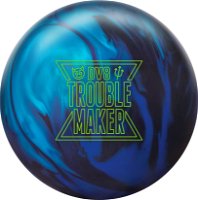Coupon excludes instant bonus items, hot deal items, and gift certificates.
Ball Watching and Making the Move
Ball Watching and Making the Move
By Bowling.com
Most bowlers will run through their same routine on each shot. What happens once they let go of the ball? Are they paying attention to how the ball is reacting from the lay down point, to hitting the pins? I believe where we struggle the most is arguing within our mind. We will tell our self that we made a bad shot instead of stating the ball over/under hooked for me. How do we know if it is the lane causing the results or our own mind telling us it was just a bad shot? I will try to break this down to understand when it is truly time to move or if you indeed made a bad shot.
Lets just say we are bowling on a typical league night. The typical house shot is laid out in your center. We bowlers all have our go to ball to start with and usually a spot picked out of where we want to throw the ball. What happens if the ball is not working as we anticipated? Is it you the bowler making bad shots or is it the lane causing the bad shots? I know we have all watched bowlers that hardly ever move and will keep gunning on second arrow. As much as you tell them to just make a move left or right based on how their ball is reacting, they just stay in their mode of forcing second arrow to work. So we start game 1 off on the correct note. We crush the pocket the first 6 frames and all of a sudden a "bad" shot was just made and left a split through the face. Did you watch the ball react the entire shot? It is possible that you were pretty close to your mark and the ball over hooked through the face. Every 6-8 frames usually requires a small adjustment by either moving our feet, eyes or both. Although we bowlers tend to be stubborn and after throwing a split, we try the same spot and throw another split. Now this time we think that the shot off the hand was much better and it is time to move. When in reality you could have made this move off the first split.
With the technology in today's bowling balls, the coverstocks soak up oil like a sponge. With that being said, you could bowl by yourself and end up moving your feet and eyes after each game. Now lets head to a league night with 5 people on each team. With 10 people on one pair, an individual game is thrown each frame bowled. 5 frames on the right lane and 5 frames on the left lane. Now you may not have to make a move seeing that each individual tends to throw the ball differently. Along with that, they are playing in a different spot on the lane. For those lucky enough to have a decent amount of revolutions, you may not have to move but a few boards throughout the night. This is due to the fact that you are further inside to start with compared to the rest of the bowlers. Those bowlers playing the outside part of the lane will end up moving the most due to the fact that is where the majority of the field throws. You may notice on some nights the your ball will almost hook at the arrows, then skid, and then hook again at the breakpoint. Why did the ball make that motion? This could be cause by that stubborn bowler that wants to play second arrow no matter what. They have fried up the heads(the front part of the lane). This requires you to move further inside where the oil is heavier in volume. You have to make moves in today's game of bowling. Once you make that move inside, you may still have to trust your ball out to the track area for ball reaction.
There will be those night where we can't seem to hit anything we are intending to hit. Even with that being said, you should still have room for error on your typical house shot. Some shots will have more than others. That even goes for the lanes as well. Some lanes will create more room for error than others(lane topography). You must watch your ball to make sure it is skidding through the heads and not hooking until it reaches the last 15ft of the lane. If your ball is hooking anytime before the backends, you are in need of making a move to the inside. You are only going to get better at this game by trial and error. Make the moves, if it doesn't work, you can always go back.
Do not be that stubborn player stuck on one arrow. Trust your ball motion and make minor adjustments throughout the night. As much as we want to stand on the same spot and throw on the same spot all night long, it will not work. After every single shot thrown, the oil is moving or slowly disappearing. For those bowlers that have multiple bowling balls, know when to and how to change bowling balls. Some are bowling balls read earlier than others. While other balls will hook more than others. Understand your equipment in what it was designed and intended for. Remember to enjoy the game of bowling and as always, Practice Practice Practice!
Coach Steve Lemke Bowling.com SFA NCAA Womens Coach















